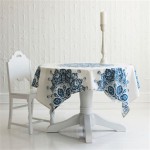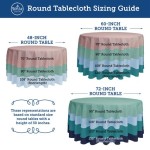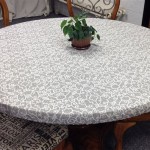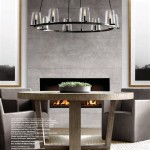How To Arrange Tables For A Wedding Reception
Arranging tables for a wedding reception is a crucial aspect of wedding planning that significantly impacts the overall ambiance and guest experience. Thoughtful table arrangement enhances the flow of the event, promotes social interaction, and contributes to the aesthetic appeal of the venue. Careful consideration must be given to factors such as guest count, venue size, desired atmosphere, and budget constraints to create a comfortable and visually appealing reception layout.
The process involves more than simply placing tables and chairs. It requires a strategic approach, encompassing various design elements and practical considerations. Prior to making any decisions, a comprehensive guest list should be finalized to determine the precise number of attendees. This information will serve as the foundation for estimating the required table count and allocating sufficient space within the chosen venue.
Furthermore, the venue itself must be thoroughly assessed. Its dimensions, structural features (such as pillars or fixed installations), and existing layout will all influence the potential table arrangement options. Architects' plans or detailed floor plans, if available, can be invaluable resources for visualizing different arrangements before physical setup begins.
The desired atmosphere plays a critical role in shaping the table arrangement. A formal, traditional reception might necessitate a symmetrical and structured layout, while a more relaxed and informal celebration may benefit from a less regimented and more conversational arrangement. The chosen table style, from round tables to rectangular banquet tables, will further contribute to the overall aesthetic and functionality of the space.
Finally, budget constraints will inevitably influence the choices made regarding table rentals, linens, centerpieces, and other decorative elements. A realistic budget should be established early in the planning process to guide decisions and prevent overspending.
Key Considerations Before Arranging Tables
Before diving into specific table arrangements, several key factors must be addressed to ensure a successful and well-organized reception. These considerations act as the foundational elements upon which the entire layout is built.
First and foremost is the guest list. Compile an accurate guest list and obtain RSVPs as quickly as possible. This information is fundamental for determining the number of tables needed. It will also allow for the grouping of guests according to their relationships, ensuring that people who know and enjoy each other are seated together. Consider factors such as family ties, friendship circles, and professional connections when creating seating assignments. Utilize online tools or seating chart templates to streamline this process and maintain accuracy.
Second, conduct a comprehensive venue assessment. Measure the dimensions of the reception area, noting any fixed obstacles such as pillars, dance floors, stages, bars, or buffet stations. These elements must be incorporated into the table arrangement to ensure smooth traffic flow and accessibility for all guests. Pay attention to the location of electrical outlets, as these will be needed for lighting, music, and other equipment. Consider the acoustics of the space and how the table arrangement might impact the overall sound quality. If available, obtain a floor plan of the venue and use it to map out potential table layouts. This will provide a visual representation of the space and allow for experimentation with different configurations before any physical setup begins.
The selection of table type, which is the third key consideration, is highly dependent on the desired atmosphere and venue characteristics. Round tables are generally considered more conducive to conversation, as they allow all guests to see and interact with each other. They are a popular choice for traditional wedding receptions. Rectangular banquet tables, on the other hand, are often used for more formal or modern events. They can create a sense of grandeur and are well-suited for long, narrow spaces. Square tables offer a compromise between round and rectangular tables, providing a more intimate setting while still accommodating a reasonable number of guests. Cocktail tables, typically smaller and taller than standard tables, are often used for cocktail hours or as supplementary seating options in lounge areas. The choice of table type will impact the overall layout and the number of guests that can be comfortably seated at each table.
Common Table Arrangement Styles
Various table arrangement styles cater to different venue shapes, guest counts, and desired aesthetics. Each style offers unique advantages and disadvantages, and the optimal choice depends on the specific circumstances of the wedding reception.
One common style is the traditional "rounds" arrangement. As the name suggests, this involves arranging round tables throughout the reception space, typically with 8-10 guests seated at each table. This layout promotes conversation and creates a sense of intimacy. It is well-suited for venues with ample space and is often used for formal receptions. A key advantage of the rounds arrangement is its flexibility. Tables can be easily adjusted to accommodate different guest counts and can be spaced to create a balanced and pleasing visual effect. However, this style can be less efficient in smaller venues, as the round tables may require more space than other configurations.
Another frequently used style is the "banquet" or "long table" arrangement. This involves setting up long, rectangular tables in rows or clusters. This layout is often used for more modern or informal receptions and can create a sense of communal dining. It is particularly well-suited for long, narrow venues and can be a more efficient use of space than the rounds arrangement. Banquet tables can accommodate a larger number of guests per table, reducing the overall number of tables required. However, this style may not be as conducive to conversation as the rounds arrangement, as guests are seated in a line. It also requires careful planning to ensure that all guests have a clear view of the head table and other focal points.
A variation of the banquet style is the "U-shape" or "horseshoe" arrangement. This involves arranging rectangular tables in a U-shape, with the head table typically positioned at the base of the U. This layout is often used for smaller, more intimate receptions and can create a sense of inclusion. It allows all guests to have a clear view of the head table and the bridal party. However, this style may not be suitable for larger receptions, as the U-shape can become too wide and make it difficult for guests to interact with each other. It also requires careful planning to ensure that the ends of the U are not too far apart, which could create awkward gaps in the seating arrangement.
The "herringbone" layout is another unique option, characterized by angled rows of rectangular tables alternating directions, resembling a fish skeleton. This arrangement can add visual interest to a rectangular room while still efficiently using the space. The angle facilitates conversation between guests seated closer, but it does require precision in setup to maintain symmetry and avoid overcrowding.
Practical Considerations for Table Arrangement
Beyond aesthetics and layout, practical considerations are paramount in ensuring a smooth and enjoyable wedding reception for all attendees. These considerations encompass accessibility, service flow, and overall guest comfort.
Accessibility is a crucial aspect of inclusive event planning. Ensure that the table arrangement allows for easy movement of guests with mobility issues. Leave sufficient space between tables for wheelchairs, walkers, or other mobility aids to navigate comfortably. Consider designating tables near entrances or exits for guests with limited mobility to minimize travel distances. Also, keep in mind the space needed for guests using canes or walking sticks as they get in and out of their seats.
The flow of service is another critical factor to consider. The table arrangement should facilitate efficient service by waitstaff. Ensure that there is sufficient space for waiters to move between tables with trays of food and beverages. Avoid creating excessively tight corners or bottlenecks that could impede service. The location of buffet stations, bars, and other service areas should be carefully planned to minimize congestion and maximize efficiency. Strategically placing these areas near high-traffic zones can help to streamline the flow of guests and prevent long lines.
Guest comfort is of utmost importance. Ensure that guests have ample space at their tables to eat and interact comfortably. Avoid overcrowding tables, as this can make guests feel cramped and uncomfortable. Provide adequate lighting at each table to allow guests to see their food and each other clearly. The placement of tables relative to loudspeakers should also be considered to minimize noise levels and prevent discomfort. Ideally, tables should be positioned away from direct sound sources to allow for easy conversation. Pay attention to the temperature of the reception area and adjust the table arrangement to avoid placing guests in direct sunlight or drafts. Consider the proximity of restrooms and other amenities when assigning tables. Providing convenient access to these facilities will enhance the overall guest experience.
Ultimately, the most effective table arrangement is one that balances aesthetic appeal, functionality, and guest comfort. By carefully considering these factors and applying a strategic approach, it is possible to create a memorable and enjoyable wedding reception for all attendees.

Wedding Seating Etiquette How To Arrange Your Tables In 7 Simple Steps Hitched Co

Breathtaking Ways To Arrange Your Tables Linentablecloth Wedding Table Layouts Reception Layout

Four Secrets To A Wedding Seating Chart For Your Guests

Creative Wedding Reception Layout Ideas To Wow Your Guest

Breathtaking Ways To Arrange Your Tables Linentablecloth Wedding Table Layouts Seating Plan Reception Layout

8 Ways To Arrange Your Tables Ay Mag

How To Create A Stunning Wedding Floor Plan Seating Chart Planning Pod

How To Properly Arrange Wedding Seating Chart Everafterguide Table Arrangements Rectangle Tables Reception Layout
:max_bytes(150000):strip_icc()/photo-d011b9734d484ae5ad01b685970a0708-f802d834a79e4800a0bf72bc8c766dcb.jpg?strip=all)
Wedding Seating Chart Templates To Simplify Planning

Table Layout Of A Wedding Reception Lovetoknow
Related Posts








